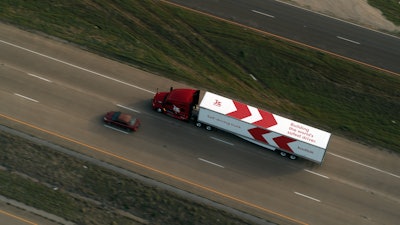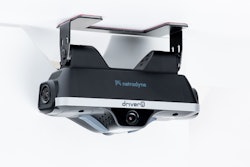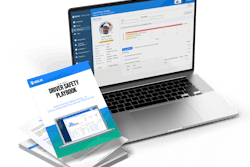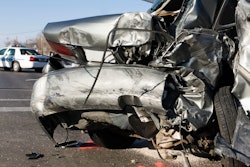
More and more companies are piloting heavy-duty autonomous vehicles (AVs), and as they hit the road, the trucking industry inches closer to disruption – and so does the insurance industry.
Insurance cost ranked seventh on the American Transportation Research Institute's (ATRI) 18th annual Top Industry Issues report for motor carriers, and Stephen Ritzler, team lead of trucking and logistics at CoverWallet, said the emergence of autonomous trucks could spark rising rates with every sized carrier, even if it is primarily the larger fleets utilizing the technology.
[Related: Who's liable when a self-driving truck causes a crash?]
“This is going to be an evolving rate scenario that's going to play out over the course of the next five to 10 years,” he said.
Luckily, both the insurance and trucking industries have time to adjust.
Kevin Abramson at Cover Whale said the industry is years – if not decades – away from seeing the true impact on insurance pricing. He said carriers will likely see a spike in insurance rates to start while the insurance industry determines the effects of having AVs on the road. But if AVs prove to be as safe as anticipated because they remove human error, from a sleepy driver to a distracted driver, he said they should drive the cost of insurance down across the trucking industry over time.
“I think when there are enough (autonomous) vehicles on the road, there should be a significant reduction in (accident) frequencies, a significant reduction in severity. But … until we can get to that point where there is enough of those vehicles on the road and there's enough case law to support how we're going to look at liability risks, I do think that the industry as a whole will probably be more conservative as they try to figure this out,” Abramson said. “I don't think we're going to see a ton of rate decreases in the early days. I think we do need to figure out liability – who is liable if it is an autonomous vehicle and an accident does occur.”
Ritzler said that could mean accountability shifts from a driver to the manufacturers of the trucks or the dispatchers.
But for now, the driver is the riskiest part of insuring a trucking company, said Matt Planeta of Heffernan Insurance Brokers’ transportation practice. And AVs could potentially take that out of the equation, but he said the insurance industry still wants to see a driver in the seat in case the technology fails.
Abramson said Cover Whale has been embracing technology, leveraging telematics in coaching programs as part of its risk mitigation strategy, and AVs will fit nicely into that. Ritzler said insurance companies will rely heavily on telematics companies to underwrite AV policies when the time comes.
“We use the law of large numbers – alot of history to determine what appropriate rates should be – and this is an emerging field; there's not any data to go on for that,” Ritzler said. “It's definitely going to be an extremely important thing for telematics companies because that's going to be the data we will have to work with, and it's going to be mostly the data from these tests that they're running with the trucks now.”
Abramson said the data procured during the testing phase will help insurers assess the risk of AVs from a safety perspective, but there’s another element that must be considered: cybersecurity.
The cybersecurity risk
You can read thriller novels about terrorists hacking a vehicle and blowing it up, but with AVs and even electric vehicles and all their technology, the industry is taking the risk off the page and onto the highway.
Hacking a diesel-powered truck is possible, but imagine the opportunities AVs will present to bad actors. Many trucking companies have cybersecurity insurance for their back-office systems, but now that will apply to their assets on the road as well.
[Related: Experts share cybersecurity insight for small carriers at NMFTA conference]
“Think about taking the autonomous 18 wheeler and now setting up a whole system that allows you to move the trucks where you want them to go. If somebody were to hack into that and then get control of all of those, a lot of times companies don't think about that,” said Justin Daniels, an attorney at Baker Donelson whose practice focuses on the technology sector. “All these things are tools and can be used for good or bad depending upon the motivation of the person or group using them.”
Daniels said AVs and EVs offer massive amounts of data: terabytes on a daily basis from lidar and radar, cameras, spatial recognition, navigation, etc. Then the AV interacts with the smart highway and 5G, communicating with infrastructure that supports it.
“That’s a lot of data,” he said.
And cybersecurity claims, particularly for ransomware, have gone through the roof over the last 18 to 24 months, Daniels said, and those numbers will only go higher once AVs hit the road, which he said will cause insurance rates to rise yet again.
“If I'm the insurance carrier and these autonomous vehicles or even electric ones have such computerized systems that they're potentially vulnerable to hacking from the outside, I have to worry about physical damage or potentially someone being killed because there was a hack that caused the vehicle to go off the rails and hit something or somebody,” he said. “Just look at how the cybersecurity insurance industry has developed and how premiums have gone up and how requirements have changed because it's become such a prevalent problem across any industry. Now you're going to bake all that into something that's on the road that's moving that could destroy property or kill people.”
Daniels said he doesn’t know how he would feel driving next to a driverless 18-wheeler barreling down the highway at 80 miles an hour. Other passenger car drivers are likely to feel the same way, but Planeta said they’re often the cause of an accident in the first place, which brings to bear another question of liability.
“The other thing that comes into play too is if you have an autonomous truck, all the vehicles around that truck are still driven by people,” he said. “Is the autonomous vehicle going to be able … to react and adjust as quickly or prevent the accident or mitigate the accident” like a human driver in a truck?











